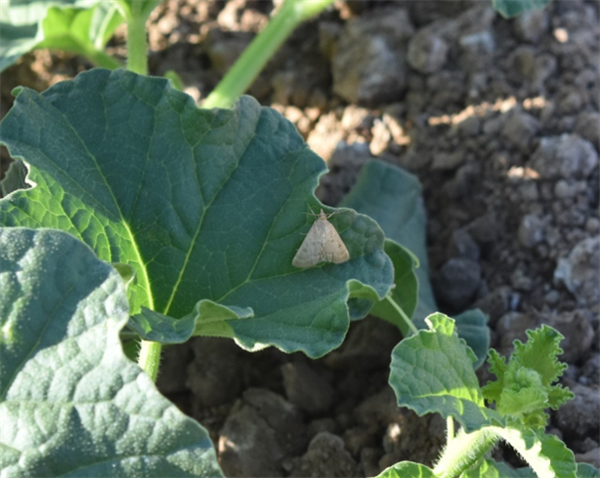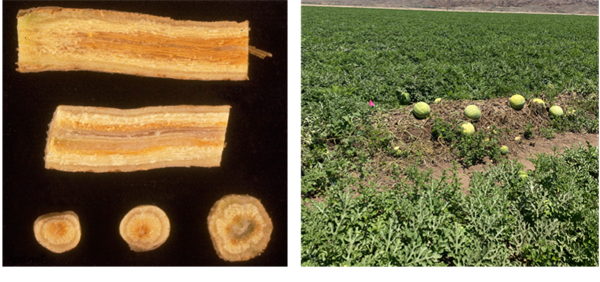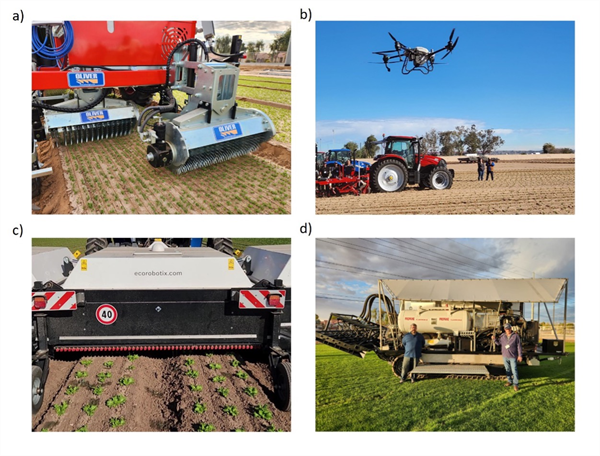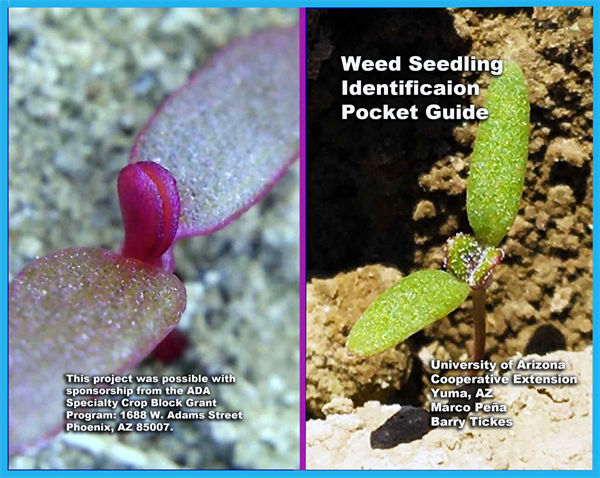-
Sep 2, 2020Let The 2020 Produce Season Begin
It’s that time of the year again. Cabbage and cauliflower transplants have been in the ground now for a couple of weeks, and broccoli and lettuce planting are just beginning. In the past week, I’ve observed or received reports from PCAs of key insect pests beginning to show up (or not) on early melon and produce crops in the desert. Here is what I’m hearing and seeing so far.
Flea beetles: They seem to be right on schedule. My melon plots at the Yuma Ag Center were hit hard in the past week by pale-stripped flea beetles (FB); two chemigations (Bifenture) were required to prevent stand losses. Have also had reports of heavy FB pressure in Dome Valley on brassica transplants. Remember, FB adults lay eggs in the soil of their favored local host plants (i.e., alfalfa, cotton, purslane, pigweed and nightshade) where larvae feed on the roots and emerge as adults about 30 days later. So, keep in mind, the source of that FB infestations hitting your new stands may not just be freshly cut hay, defoliated cotton or disked weeds. For more information on FB: Insect Pests at Stand Establishment
Bagrada bug: No sightings of bagrada bug adults yet, but it is still early. It has been my experience over the past 10 years that bagrada really begin to show up around mid-September, coinciding with the end of the monsoon humidity. The exception would be transplanted fields, where adults have been known to hitch a ride from the nursery. Haven’t seen that much in the past few years as the local nurseries have been very diligent in preventing bagrada bugs in their facilities. However, given the higher than normal rainfall and bagrada numbers we saw last spring, I anticipate them to begin showing up in a few weeks. How heavy? I dare not guess. For more information on bagrada: Bagrada Bug Management Tips for the Low Desert 2019
Lepidopterous Larvae (worms): As would be expected, reports of Beet armyworm larvae on the earliest transplants are beginning to trickle in. Pheromone trap catches jumped significantly last week when we caught over 130 moths per night in the Wellton area. It is not surprising that trap is adjacent to alfalfa. So, get ready. Have also had several reports of a small tan, triangular-shaped moths on transplants, particularly out east. Have also been finding the moths on my melons at the Ag Center. They are Garden webworm moths (see image below). Important host crops for the webworm include alfalfa, melons, cabbage and lettuce. Not surprising that one PCA reported finding larvae on cabbage transplants. Keep a keen eye out for them. Will keep you posted on future developments. No reports of Diamondback moth larvae in the field yet. Did not have any adult trap captures throughout the summer. However, a few DBM adults did show up out east in one of pheromone trap this week near brassica transplants. Keep an eye for these guys, particularly following storms and heavy winds. For more information: 2020 Guidelines for Diamondback Moth Management in Desert Cole Crops
Whiteflies: Area wide sticky trap captures have been low, suggesting that adults are not moving in large numbers. However, in some areas, adult populations on melons seem to be a little heavier than we’ve seen in the past 2-3 years. Numbers increased on my melon plots last week coinciding with nearby cotton defoliation. Similarly, high adult numbers on melons in Wellton and Texas Hill are in fields near or adjacent to cotton and alfalfa. The good news is there are several alternatives to knock them down. For more information: 2020 Guidelines for Whitefly / CYSDV Management on Fall Melons.


What caused this damage to this melon leaf? Might be biotic, might be abiotic.

DAMAGE: Bemisia whiteflies
To contact John Palumbo go to: jpalumbo@ag.Arizona.edu









